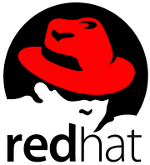Red Hat Certified System Administrator (RHCSA) was launched in November 2010. It replaces the old Red Hat Certified Technician (RHCT) qualification.
The RHCSA exam (EX200) is 100% performance-based, coming after a review of the knowledge and skills required daily by today’s system administrators.
Since 2010, the RHCSA has been made a prerequisite for those taking the Red Hat Certified Engineer (RHCE) qualification.
This exam and the exam objectives provided here are based on the Red Hat®Enterprise Linux® 7 version of the exam.
The performance-based RHCSA exam (EX200) tests your knowledge and skill in areas of system administration common across a wide range of environments and deployment scenarios. You must be an RHCSA to earn a Red Hat Certified Engineer (RHCE®) certification. The skills tested in this exam are the foundation for system administration across all Red Hat products.
An RHCSA certification is earned when an IT professional demonstrates the core system-administration skills required in Red Hat Enterprise Linux environments.
- To pass the redhat exam you must be able to accomplish many points :
- Study points for the exam
- Red Hat reserves the right to add, modify, and remove objectives. Such changes will be made public in advance through revisions to this document.
- RHCSA exam candidates should be able to accomplish the tasks below without assistance. These have been grouped into several categories.
- Understand and use essential tools
-
- Access a shell prompt and issue commands with correct syntax
- Use input-output redirection (>, >>, |, 2>, etc.)
- Use grep and regular expressions to analyze text
- Access remote systems using ssh
- Log in and switch users in multiuser targets
- Archive, compress, unpack, and uncompress files using tar, star, gzip, and bzip2
- Create and edit text files
- Create, delete, copy, and move files and directories
- Create hard and soft links
- List, set, and change standard ugo/rwx permissions
- Locate, read, and use system documentation including man, info, and files in /usr/share/doc
Note: Red Hat may use applications during the exam that are not included in Red Hat Enterprise Linux for the purpose of evaluating candidate’s abilities to meet this objective.
- Operate running systems
-
- Boot, reboot, and shut down a system normally
- Boot systems into different targets manually
- Interrupt the boot process in order to gain access to a system
- Identify CPU/memory intensive processes, adjust process priority with renice, and kill processes
- Locate and interpret system log files and journals
- Access a virtual machine’s console
- Start and stop virtual machines
- Start, stop, and check the status of network services
- Securely transfer files between systems
- Configure local storage
-
- List, create, delete partitions on MBR and GPT disks
- Create and remove physical volumes, assign physical volumes to volume groups, and create and delete logical volumes
- Configure systems to mount file systems at boot by Universally Unique ID (UUID) or label
- Add new partitions and logical volumes, and swap to a system non-destructively
- Create and configure file systems
-
- Create, mount, unmount, and use vfat, ext4, and xfs file systems
- Mount and unmount CIFS and NFS network file systems
- Extend existing logical volumes
- Create and configure set-GID directories for collaboration
- Create and manage Access Control Lists (ACLs)
- Diagnose and correct file permission problems
- Deploy, configure, and maintain systems
-
- Configure networking and hostname resolution statically or dynamically
- Schedule tasks using at and cron
- Start and stop services and configure services to start automatically at boot
- Configure systems to boot into a specific target automatically
- Install Red Hat Enterprise Linux automatically using Kickstart
- Configure a physical machine to host virtual guests
- Install Red Hat Enterprise Linux systems as virtual guests
- Configure systems to launch virtual machines at boot
- Configure network services to start automatically at boot
- Configure a system to use time services
- Install and update software packages from Red Hat Network, a remote repository, or from the local file system
- Update the kernel package appropriately to ensure a bootable system
- Modify the system bootloader
- Manage users and groups
-
- Create, delete, and modify local user accounts
- Change passwords and adjust password aging for local user accounts
- Create, delete, and modify local groups and group memberships
- Configure a system to use an existing authentication service for user and group information
- Manage security
-
- Configure firewall settings using firewall-config, firewall-cmd, or iptables
- Configure key-based authentication for SSH
- Set enforcing and permissive modes for SELinux
- List and identify SELinux file and process context
- Restore default file contexts
- Use boolean settings to modify system SELinux settings
- Diagnose and address routine SELinux policy violations
source : https://www.redhat.com/en/services/training/ex200-red-hat-certified-system-administrator-rhcsa-exam





